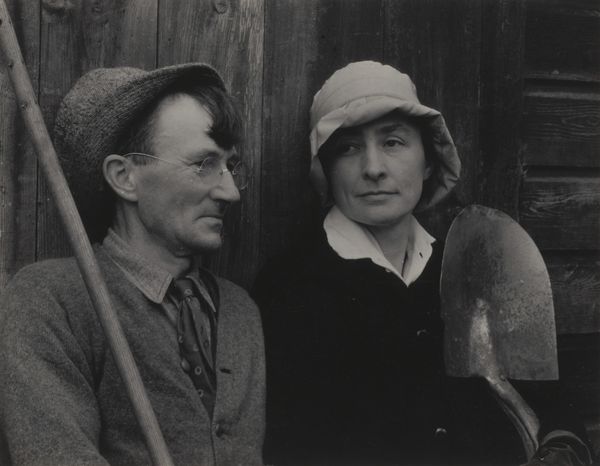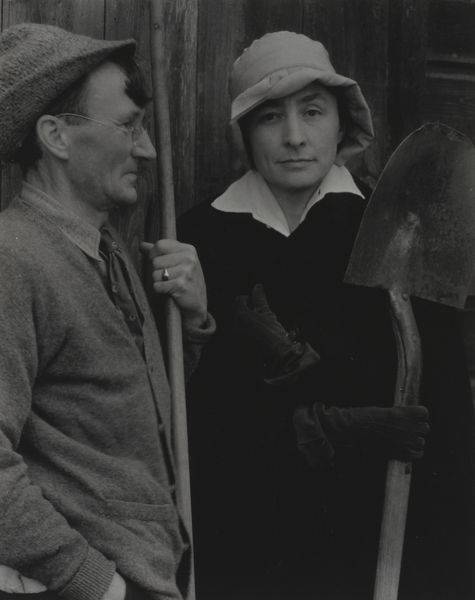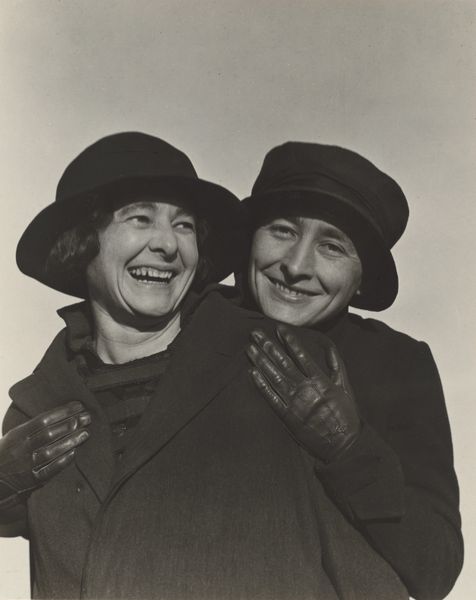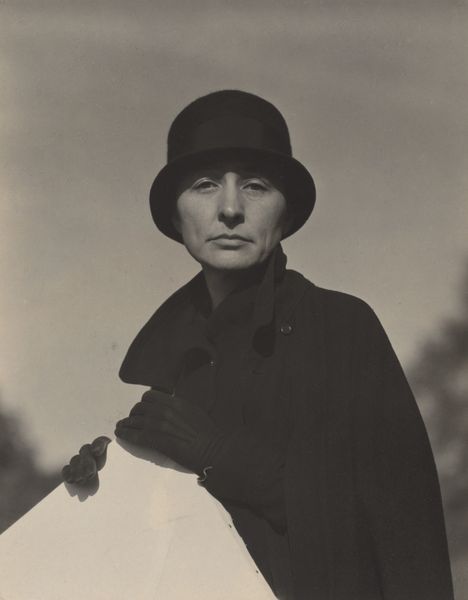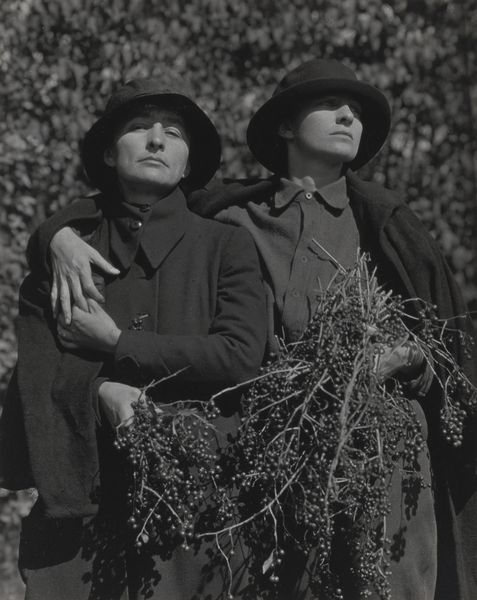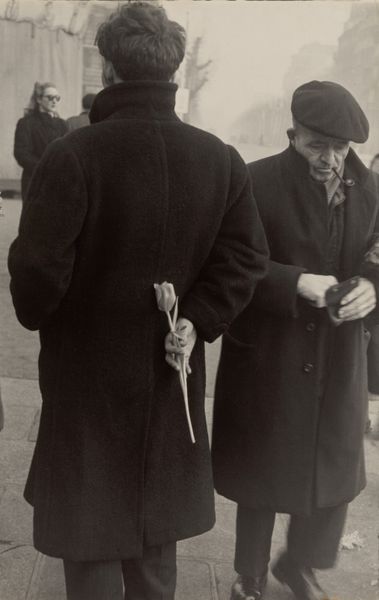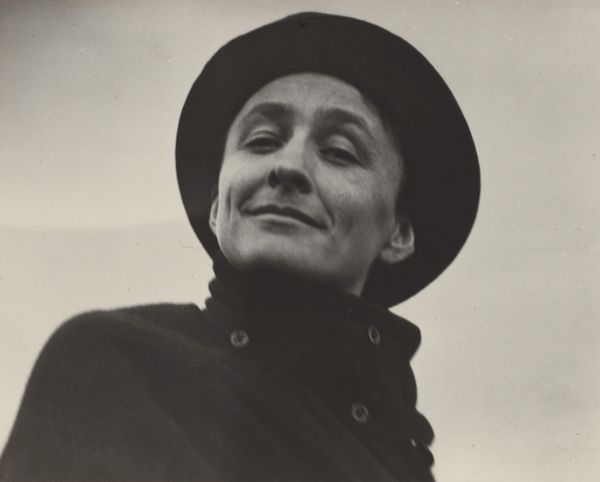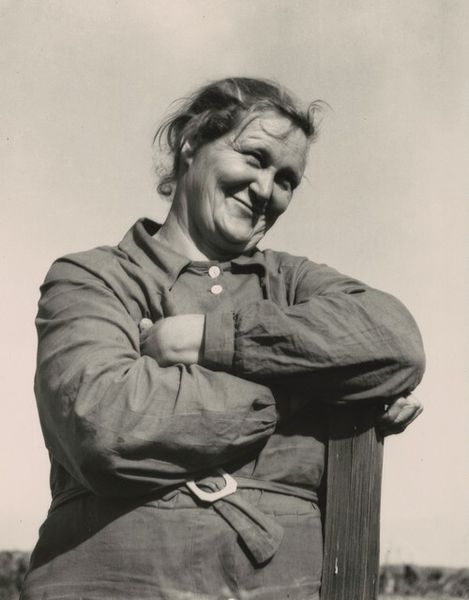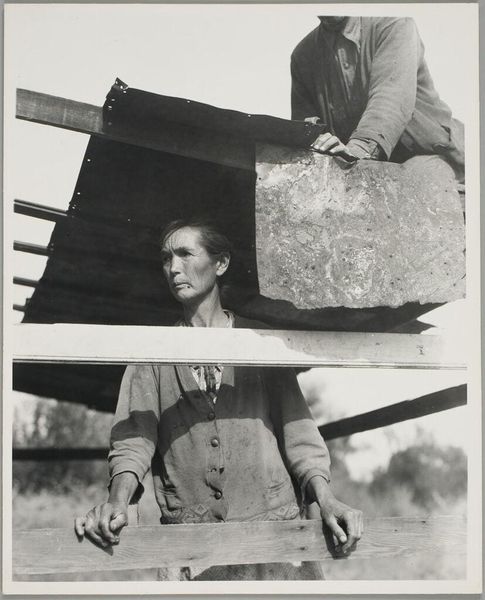
photography
#
portrait
#
pictorialism
#
black and white format
#
archive photography
#
photography
#
historical photography
#
black and white
#
modernism
Dimensions: sheet (trimmed to image): 9.1 x 11.7 cm (3 9/16 x 4 5/8 in.) mount: 34.2 x 27.5 cm (13 7/16 x 10 13/16 in.)
Copyright: National Gallery of Art: CC0 1.0
Editor: This striking photograph, "Georgia O'Keeffe and Donald Davidson" from 1924 by Alfred Stieglitz, it’s…well, it’s unexpected! The pairing feels deliberately posed, contrasting O’Keeffe's known persona. How should we interpret this? Curator: What do you notice about the depiction of O’Keeffe, relative to Davidson? Think about their roles as creative individuals within the artistic landscape of the early 20th century. Stieglitz's framing plays into specific narratives. Editor: He presents Davidson, a farmer, literally holding a shovel, close to the earth, while O’Keeffe looks almost regal, yet still outside…almost as if she does not fit this context? Curator: Exactly! Stieglitz, as O’Keeffe's husband and promoter, carefully constructed her image. This photo exists within a larger body of work that solidified her as an iconic figure. This “American” imagery, juxtaposing her and the labourer, reflects the avant-garde interest in the vernacular but simultaneously reinforces societal roles. Are those intentional tensions, you think? Editor: Absolutely! This reinforces her, by contrasting the labour of earth to artistic expression. Are you saying, there is an awareness, on the part of Stieglitz, of creating a brand for his wife and the political role for women? Curator: He’s carefully managing public perception, absolutely. The very act of photographing them together, of displaying it within his galleries, is a deliberate act of cultural positioning. So in what ways, therefore, did this add or take from her achievements? Editor: I see. So it's not just about the subjects, but the photographer's role in shaping their narrative. It almost suggests, through the way O’Keefe is displayed, it adds a regal and posed authority to her. Curator: Precisely. Understanding the historical context—the artistic movements, the social expectations—deepens our appreciation, don't you agree? Editor: It’s amazing how a single photograph can reveal so much about power, perception, and the art world!
Comments
No comments
Be the first to comment and join the conversation on the ultimate creative platform.
